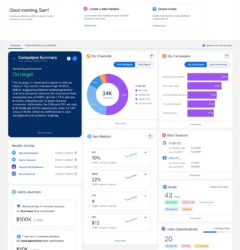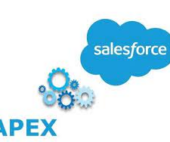Marketing automation is software tool that handles routine marketing tasks without the need for human action or intervention. Common marketing automation workflows include email marketing, behavioral targeting, lead prioritization, and personalized advertising.
Marketing automation is the use of technology to automatically perform marketing tasks, such as: email campaigns, social media advertising, behavioral targeting, re-targeting, lead prioritization, and personalized advertising.
Marketing automation can help teams: become more efficient, improve the customer experience, increase traffic, engage audiences, and acquire new customers.
Some benefits of marketing automation include:
- Returning an average of $5.44 for every dollar spent
- Most companies recovering the initial cost of automation software within six months
Some marketing automation tools include:
- Salesforce Marketing Cloud Engagement: Advanced marketing automation including personalization tools and cross-cloud marketing
- Salesforce Marketing Cloud Account Engagement: B2B advanced marketing automation tool
- Adobe Marketo Engage: A well-known marketing automation tool
- HubSpot: A free, all-in-one platform with CRM and marketing automation capabilities
- Active Campaign: An intelligence marketing automation platform with hundreds of automation triggers and actions
- MailChimp: An email marketing platform that helps businesses create targeted emails and manage subscribers
- Omnisend: Automates email, push notifications, and SMS
With the emergence of artificial intelligence (AI), marketing automation is enabling marketers to deliver more targeted and personalized content.
What are marketing automation strategies?
An automation strategy is a playbook for a brand’s automated marketing tactics. It should answer the who, what, where, when and how of your automation plan. Your plan should tell you: Who your audience is. Include detailed information on your target audience and each of the audience segments.
Does marketing automation really work?
Marketing automation can be a real game-changer for small businesses. It helps you score, sort, and nurture leads throughout the sales cycle, boosting conversions by targeting customers with the highest purchasing potential. All without the need for human intervention. This frees your marketing and sales professionals up to do other work.
Customer journeys are the sum of individual personalized experiences with your brand. With automation, you can tailor every interaction based on customer data to create ongoing, seamless journeys through every brand touchpoint.
5 Steps to Getting Started with Marketing Automated Campaigns
- Get to know your customers and data.
- Map your customer journey.
- Craft a content strategy based on your journey and goals.
- Build up your email distribution list.
- Monitor and optimize, constantly.
Here are some best practices to keep in mind when designing your marketing automation strategy:
- Define and present your goals. Use real numbers to justify the investment in a marketing platform to your stakeholders.
- Collaborate with other teams. Your marketing automation strategy will touch several teams in your company. Get their input and buy-in before you begin.
- Create process visualizations. Use detailed diagrams of your marketing automation workflow to relay your big picture objectives to your entire organization — efficiently and effectively.
- Prepare for database segmentation. Consider your customer data. Think about who you’d like to engage, and why.
- Prepare your content strategy. Build your content library. Create interesting, engaging, and relevant messaging designed to reach all stages of the customer lifecycle.
- Plan for a slow rollout. The world’s most successful automation firms stagger their launches. Test early and optimize the next block of programs to give yourself the best chance of success.
- Analyze as you go. See what’s working and what’s not. Use some of the time you get back from automation to dig into the analytics and make the changes that will grow your business.
Tectonic has extensive experience launching automation solutions running in the Salesforce ecosystem. If you are ready to automate the marketing process in Salesforce, contact Tectonic today.
Content updated December 2024.












